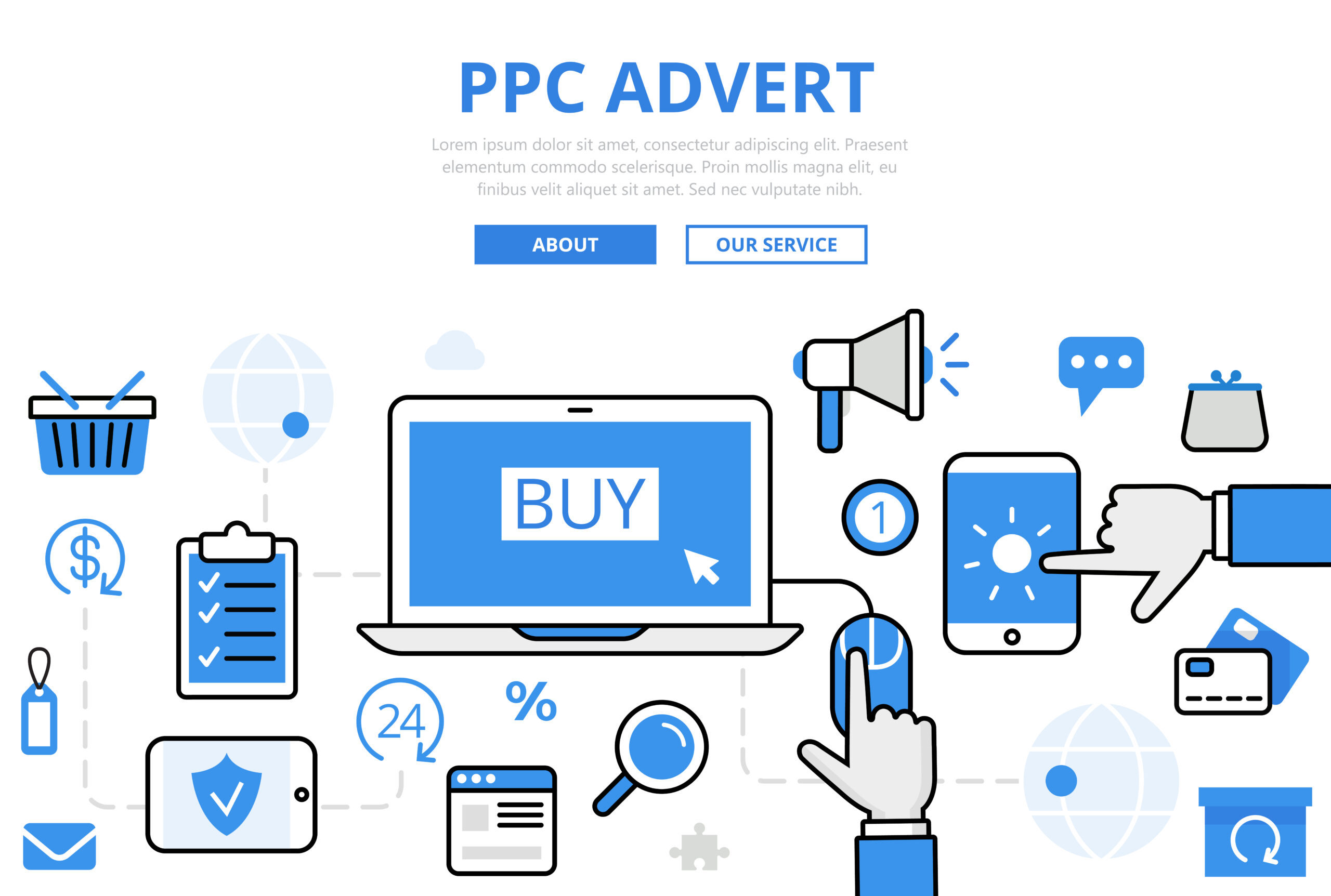Pay-Per-Click (PPC) advertising is a highly competitive space, and understanding your competitors’ strategies can give you a significant edge. PPC competitor analysis helps you identify what’s working for your competition so you can optimize your campaigns, target the right audience, and maximize ROI. In this guide, we’ll walk you through a step-by-step process to conduct effective PPC competitor analysis and improve your campaign performance.

1. Identify Your Top Competitors
Before diving into PPC data, you need to know who your main competitors are. These are the businesses that are competing for the same keywords and audience as you.
Steps to Identify Competitors:
- Manual Search: Search for your main keywords in Google and see which companies appear in the paid ad section. Take note of the top ones.
- Use Competitor Analysis Tools: Tools like Semrush, SpyFu, and Ahrefs can help identify competitors by analyzing the keywords they’re bidding on.
- Industry Research: Look at your direct business competitors and assess their PPC presence by checking for ads on relevant industry blogs and platforms.
Pro Tip:
Keep a list of both primary and secondary competitors. Primary competitors are those directly vying for your target audience, while secondary ones may not be direct competitors but still bid on similar keywords.
2. Analyze Competitor Keywords
The core of any PPC strategy lies in the keywords you bid on. By identifying your competitors’ keywords, you can find opportunities for your own campaign and avoid oversaturated or costly terms.
How to Analyze Competitor Keywords:
- Use PPC Tools: Platforms like Google Ads Keyword Planner, Semrush, and SpyFu allow you to analyze the keywords your competitors are bidding on. These tools also show estimated CPC (Cost-Per-Click) and competition level.
- Review Search Queries: Check which keywords are triggering your competitors’ ads by performing searches related to your products or services. Observe which ads show up most frequently.
- Analyze Negative Keywords: Identify what keywords your competitors are avoiding. This helps you refine your own negative keyword list to filter out irrelevant searches.
SEO Tip:
Focus on long-tail keywords that have lower competition and a higher chance of conversion. For example, instead of just “running shoes,” consider “affordable running shoes for men.”
3. Evaluate Competitor Ad Copy
The ad copy is what attracts clicks. By reviewing the messaging, tone, and structure of your competitors’ ads, you can learn what resonates with the audience and what gaps you can exploit.
Steps to Evaluate Ad Copy:
- Analyze Headlines and Descriptions: Look at the language your competitors use. Are they focusing on price, benefits, or specific features? Take note of calls-to-action (CTAs) such as “Shop Now,” “Get a Quote,” or “Learn More.”
- Compare Ad Extensions: Ad extensions such as site links, call extensions, and location extensions can enhance visibility. Evaluate how your competitors use extensions to increase click-through rates (CTR).
- Identify Unique Selling Propositions (USPs): Pay attention to the USPs your competitors highlight. Are they focusing on free shipping, discounts, or a limited-time offer? Knowing their strengths can help you identify opportunities for differentiation.
SEO Tip:
Incorporate your own unique benefits or offers that make you stand out. If your competitor emphasizes a “money-back guarantee,” you might emphasize a “100% satisfaction guarantee” or “free trial.”
4. Study Competitor Landing Pages
The effectiveness of a PPC ad isn’t just determined by the ad copy—it’s also about where the ad leads. High-converting landing pages are designed to match user intent and provide a seamless experience from ad to action.
How to Analyze Landing Pages:
- Look for Alignment: Does the landing page align with the ad copy? Competitors with high-converting campaigns often ensure that the message in their ad is echoed on the landing page.
- Evaluate User Experience (UX): Study the layout, page speed, and mobile responsiveness of competitor landing pages. A clean, fast-loading page with an easy-to-use form will convert better than a cluttered or slow one.
- Check Conversion Elements: Analyze the CTAs, form length, and visual elements. Do they use trust signals like testimonials or reviews? What about urgency tactics like countdown timers or limited-time offers?
SEO Tip:
Make sure your landing pages are optimized for mobile devices and load in under three seconds. Google penalizes slow-loading pages, which can reduce your quality score and increase your CPC.
5. Examine Competitor Bidding Strategies
Understanding how much your competitors are willing to spend on PPC campaigns can give you insights into their strategy. This includes their average bid, how they budget, and how often their ads appear for target keywords.
How to Evaluate Bidding Strategies:
- Use Auction Insights: Google Ads’ Auction Insights report can show how your performance compares with other advertisers in the same auction. This helps you see if competitors are outranking you or appearing more frequently.
- Monitor Ad Positioning: Look at the average ad position of your competitors for specific keywords. Are they consistently appearing in the top 3 slots? This could indicate an aggressive bidding strategy.
- Analyze Competitor Budget Allocation: Tools like Semrush and SpyFu offer insights into your competitors’ estimated PPC budget. This can help you assess how much they’re willing to invest and adjust your own budget accordingly.
SEO Tip:
Focus on improving your Quality Score rather than increasing your bids. A higher Quality Score can help you achieve better ad positioning at a lower CPC.
6. Track Competitor Performance Metrics
To get the full picture of your competitors’ PPC strategy, you need to analyze their performance metrics. Tracking performance will help you identify what’s working and where you can gain a competitive advantage.
Key Performance Metrics to Track:
- Click-Through Rate (CTR): A high CTR indicates that your competitors’ ads are relevant and engaging. You can compare their CTR to yours to see where you need improvement.
- Cost-Per-Click (CPC): Understanding how much your competitors are paying per click can help you determine if you’re bidding too high or too low for the same keywords.
- Conversion Rate: While you can’t directly access your competitor’s conversion data, tools like SpyFu can estimate how many conversions they’re generating. This will help you understand how efficient their campaigns are.
SEO Tip:
Regularly track and compare your performance metrics against competitors. This will help you spot trends, evaluate improvements, and adapt quickly to changing market conditions.
7. Identify Competitor Weaknesses
A successful PPC competitor analysis not only identifies strengths but also uncovers weaknesses in your competitors’ strategies. These weaknesses are where you can gain an advantage.
How to Identify Weaknesses:
- Look for Gaps in Keywords: Are your competitors neglecting certain high-intent keywords? These could be opportunities for you to target and gain traffic.
- Assess Landing Page Flaws: If a competitor’s landing page is slow, unoptimized, or lacks clear CTAs, they could be losing valuable leads. Improve your landing page to capitalize on their weaknesses.
- Review Ad Copy Effectiveness: Are their ads repetitive or lacking fresh offers? Keep your messaging dynamic and aligned with current trends to stay ahead.
SEO Tip:
Run A/B tests on your own campaigns to ensure that you’re constantly improving. Testing different ad copy, landing pages, and bidding strategies can help you outperform even the top competitors.
Conclusion
PPC competitor analysis is an essential part of improving your campaign’s performance. By studying your competitors’ keywords, ad copy, landing pages, and bidding strategies, you can gain valuable insights into what works and where there are opportunities to outperform them. The key is to continually monitor and adapt your strategy based on competitor data, so you can maximize ROI and drive sustained growth.





2 thoughts on “Step-by-Step Guide to PPC Competitor Analysis”